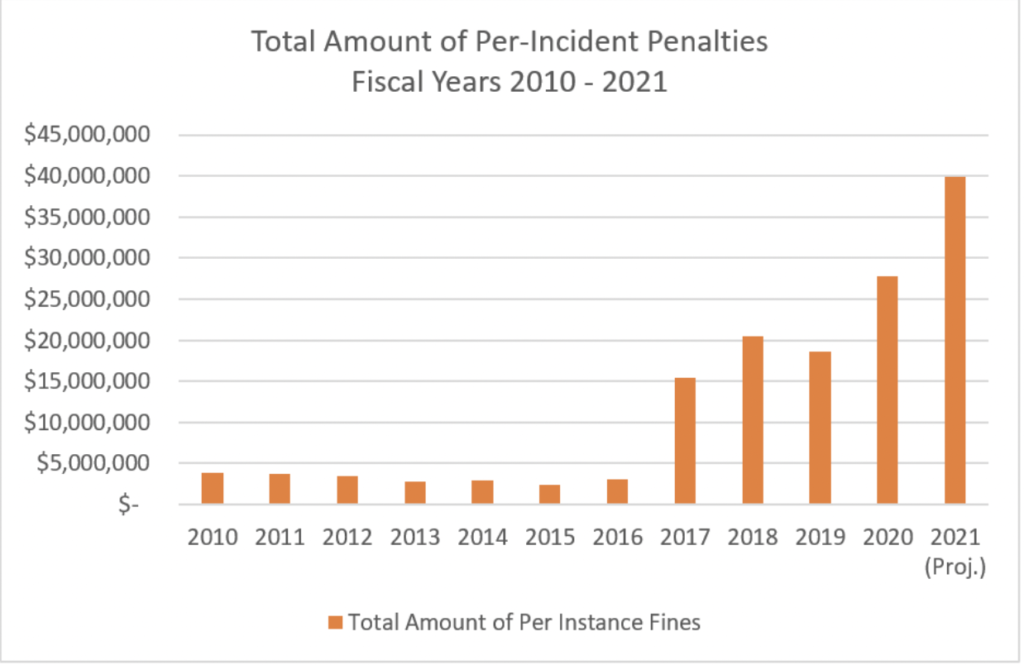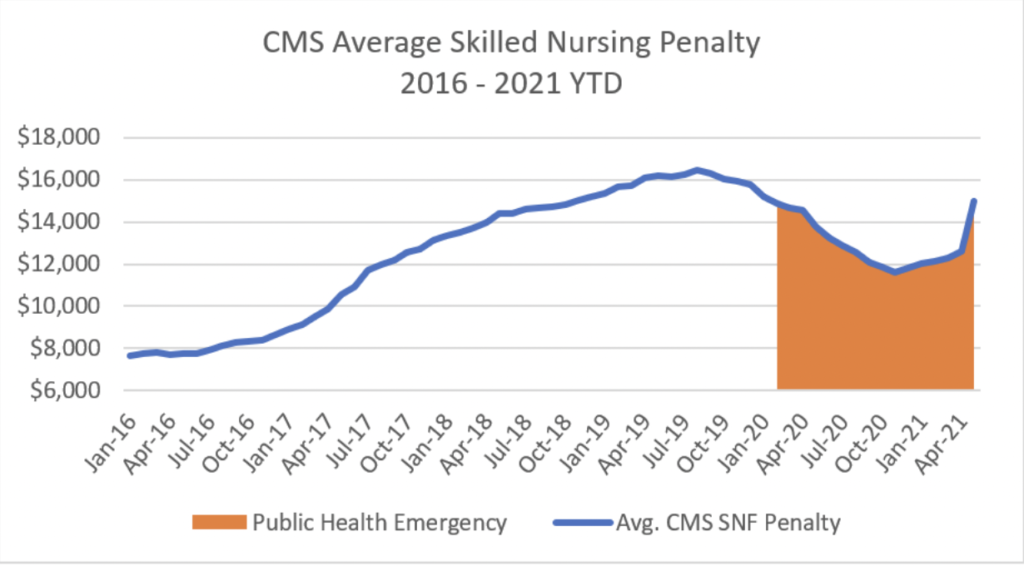Although the Centers for Medicare & Medicaid Services (CMS) has backed off high-dollar civil monetary penalties (CMPs) in recent years, a trend that was heavily criticized by the AARP Foundation earlier this year, new research indicates that CMPs are picking back up.
Fines collected through per-incident penalties increased more than eight-fold from 2016 to 2020 — and are projected to be even higher for 2021, according to a note published this week by the National Investment Center for Seniors Housing & Care (NIC). However, per-day penalties, which are often applied retrospectively and are the recommended approach for major violations, have curtailed substantially, the report suggests.
“As per-day penalties can be applied retrospectively and accumulate to significant amounts, operators benefitted during these years, as they were sheltered from penalties above the per-incident maximum fine of $20,965,” NIC senior principal Ryan Brooks said in the report.
There is no cap on the accumulation of per-day penalties, he added.
Many consumer advocacy groups have pushed for the switch back to per-day penalties. One such advocate is the Center for Medicare Advocacy, which opposed efforts to roll back nursing home resident projections in 2019, including the switch to per-instance CMPs.
Additionally, the AARP Foundation filed a lawsuit earlier this year alleging that the federal government’s decision to severely limit monetary penalties for nursing homes put residents’ lives in danger during the pandemic.
With Chiquita Brooks-LaSure taking over CMS, a change in focus and policy is possible, experts at NIC believe. That could mean a return to stricter and potentially more costly enforcement, as CMS penalties usually change in approach and severity between administrations.
The current SNF workforce shortage may also force Brooks-LaSure to examine current laws that take away SNFs’ authority to train staff to be certified nursing assistants (CNAs) for two years if they are hit with CMPs, NIC’s Brooks added.
“With critical shortages in labor pools routinely being reported, particularly among CNAs, this penalty could have a major impact on a skilled nursing property’s staffing pipeline,” he wrote.
Rise in average SNF penalty noted
Still, while the 2017 changes to the CMP guidelines have received harsh criticism, the data shows they led to a dramatic increase in per incident fines.

With the rise in per-incident penalties for SNFs, the average CMP also steadily increased from $8,000 in January 2016 to over $16,000 in July 2019, though NIC’s Brooks noted that operators benefited during these years due to the fine limit.
Once the pandemic hit average CMS penalties for SNFs declined to under $12,000 by October 2020.

“This is likely a reflection of the more collaborative, less-punitive surveys that took place while surveyors – the CMS regulatory staff who assess compliance with Medicare health and safety regulations – and operators alike learned about COVID-19 and its spread,” Brooks said.
However, CMPs are on the rise again coming out of COVID-19, with the average SNF penalty coming in at around $15,000 by April.
Companies featured in this article:
Center for Medicare Advocacy, Centers for Medicare & Medicaid Services, National Investment Center for Seniors Housing & Care


